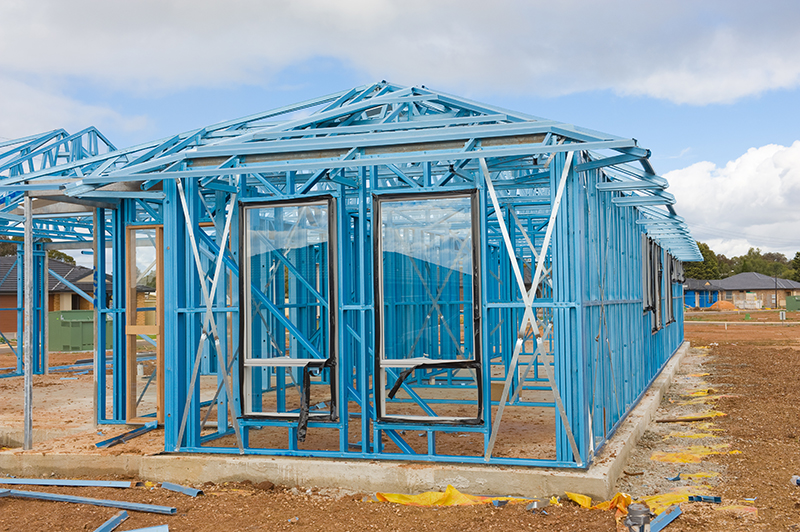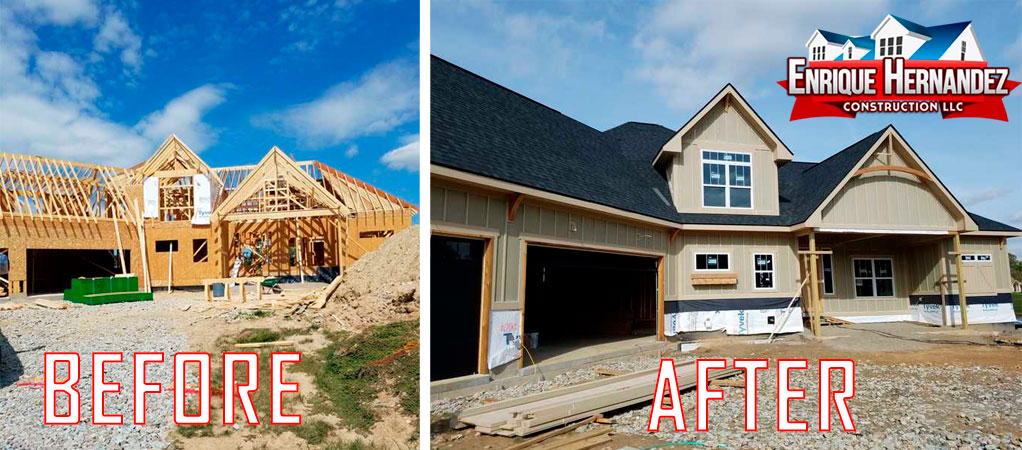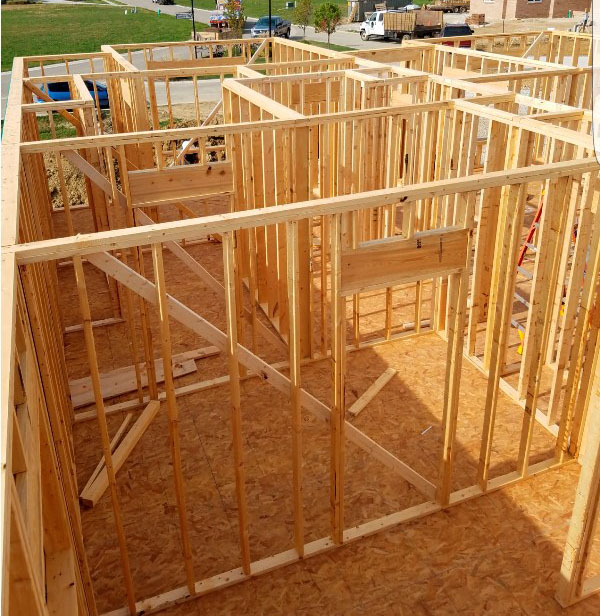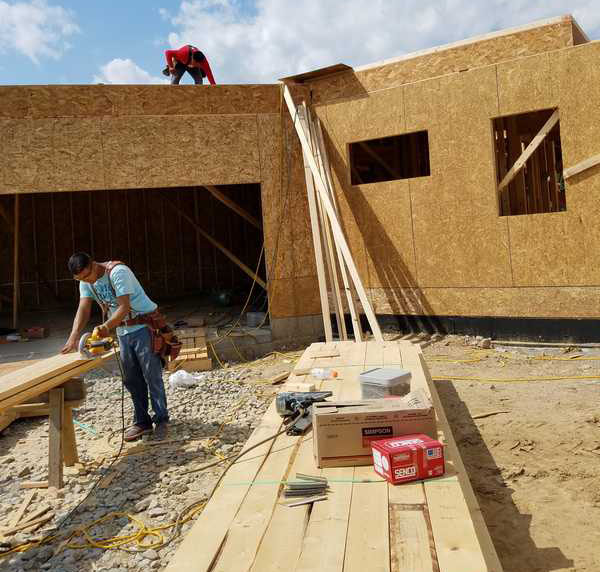
There is a big debate when it comes to steel studs vs wood studs for building new houses or room additions.
When evaluating steel studs vs wood studs, you need to consider many things. For instance, steel studs resist more humidity and fungi. They don’t warp or expand like wood, which helps to deliver straighter walls. However, wood studs are great insulators, energy-efficient, and count on great design flexibility.
We hate to admit it, but there are good arguments for either framing technique. I’m starting to get excited to uncover ahead more surprising facts for you.
Of course, as a homeowner, you want to make the best choice for your project. You want to go for a material that fulfills all your home design & building needs and stays within budget.
Proven Benefits of Metal Studs
- Strong and stable framing structures.
- Steel frames are durable.
- Highly resistant to fungi.
Unique Benefits of Using Wood Studs
- Lumber is a natural insulator.
- Provides great design flexibility.
- Wood studs are environmentally friendly.
- Lumber is easier to cut.
Why Is Stud Framing Crucial in a New House?
Framing is for a home like our skeletons are for our bodies. That’s right. Framing is the skeleton of a house.
Using another analogy: Both foundations and framing are what holds everything together in your house.
Foundations bear weight and give stability to your house. In other words, they act as the roots of your house.
Framing is like the trunk and branches to a house. It is what keeps everything standing, holding together windows, doors, insulation, plumbing and utility wires, and more.
The skeleton of your house is the central piece over which other features fit. Having the ideal house bones will make sure that the rest of the structure is laid on perfectly.
Once you get your new home blueprint determining the size, shape, and features of your home, you’ll need an expert residential framing contractor to build a stud framing structure to perfection.
And for you to know, there is no such thing as a perfect construction material, so we’ll explain the benefits and drawbacks of both.
Proven Benefits of Steel Studs for Residential Framing
Steel Offers Strong and Stable Structures

Steel is a perfect example of stability and strength. During the building process of a new home, steel remains straight. And it surely delivers straighter walls and sharp corners.
Steel can withstand earthquakes, hurricanes, and other natural disasters (making insurance for steel-framed homes often lower).
Another good thing is that steel has a high strength-to-weight ratio, which allows homes to be built with less framing.
So, in friendlier words, steel can withstand more weight such as concrete floors, windows, doors, metal tile roofs, keeping everything together for years and years.
Steel House Frames Are Durable
Perhaps one of the key advantages of steel home frames is their durability. Steel studs are impervious to fire, termites, rot, splitting, and any other number of hazards.
Steel is one of the few building materials that don’t warp or expand.
It is also better equipped to deal with water damage because “it does not rot.”
As we mention couple lines above, termites, carpenter ants, and other insects that feed on wood don’t have the slightest interest on steel studs. So, you’ll feel safe and grateful because these pests can’t burrow into the steel beams, which makes infestations less likely and cheaper to treat.
When steel studs are installed and maintain properly, steel frames have the potential to last for several generations.
Steel Is Highly Resistant to Fungi
One quick question: Can mold grow on metal? Fortunately, steel is highly resistant to fungi.
Mold needs organic material, moisture, and oxygen to thrive. So, one significant advantage of building with steel studs is that they are inorganic. Mold and fungi cannot feed on steel studs.
The Cons of Using Steel Studs
Are you ready for the bad things? We don’t think so. We bet you didn’t see this coming.
And yes, steel studs might look indestructible, but the are far from beeing the perfect building material.
Drawbacks of Using Steel Framing:
- It’s harder to insulate.
- Live wires lead to fires.
- Rust is a slow yet menacing reaction.
It’s Harder to Insulate
It’s harder to insulate the metal stud framing in a house. The reason is simple: steel is a great heat conductor.
In general and simple terms, steel studs can reduce the overall R-value of insulation materials by 50%. Say what? Fifty? Crazy, isn’t it?
Oh man, in summer, it’s going to be hot inside of a steel framed house.
The only way to overcome this huge thermal challenge is by suiting your interior and exterior walls with high levels of insulated sheathing.
Basically, you need to use an insulating framing board that is designed for steel frames.
And if you don’t work with the most reputable & skilled metal stud framing contractor of your city, chances are you’ll end up with a house that is poorly insulated.
Live Wires Lead to Fires
Most blog posts would add fire resistance as a benefit/pro of metal stud framing. Disclaimer: We’re not the tipical contractor blog. We say things the way they are.
And one thing is for sure: live wires are a serious fire risk if they get in contact with steel studs.
Fortunately, we have good circuit breakers that act and prevent fires.
Rust Is a Slow yet Menacing Reaction
Simply put, rust is the Kryptonite to steel. While steel is immune to fungi and rot, humidity can create the biggest threat: rust.
If metal framing is exposed for two months to standing water, leaks, or high levels of humidity, it will rust.
And once rust appears in your steel studs, it would begin to spread. So, if you leave this problem untreated, rust will wreak havoc on your house.
Owners of steel framed houses must keep an eye to spot rust early on. Once they spot a defective beam, they need to replace it quickly, avoiding costly repairs.
The only type of metal stud framing that is superior in withstanding humidity and rust is aluminum stud framing. But, and this is a big but; aluminum studs can’t be used for load bearing walls.
So it’s normally used for framing walls that don’t get the direct load of your house.
You can use both aluminum and steel for residential framing. But at the end of the day, it’s your house steel framing the one holding your house together and standing.
Unique Benefits of Using Wood Studs to Build Your House!

Lumber Is a Natural Insulator
Wood stud framing is a great choice when it comes to insulation & energy savings.
Wood has always been an excellent insulator. Even though there have been advancements in increasing the resistance to heat of building materials, lumber remains a great insulating option.
Lumber beats by far other materials like brick and steel when it comes to insulation. For instance, wood’s natural structure contains many air pockets, which limit its ability to conduct heat.
According to Make It Wood Organization, when it comes to insulating values, wood is 15 times better than masonry, 400 times better than steel, and 1,770 times better than aluminum.
So, if you choose to build a house using wood, your house framing will gather heat during the day, and it will slowly release it at night. So, there won’t be drastic fluctuations in gaining and losing heat.
Lumber homes are energy efficient because they keep cold air out in the winter and cool air in through the summer.
So, by keeping the temperature stable, your home will spend less energy on heating, ventilation & air-conditioning (HVAC) systems.
Wood Studs Provide Great Design Flexibility
Lumber framed houses are more flexible than brick ones. Since a wood framed house is a lightweight construction, you can design and build almost anything you wish.
This allows you to have intricate home designs that break the boundaries of your imagination.
Another benefit of lumber is its design flexibility.
With a lumber framed house, you’ll have more material and finish choices.
Also, we know that not everything on the building site will always go according to the building plan. So, wood studs provide some flexibility to home builders to perform last-minute changes.
As you see, this “steel studs vs wood studs” debate is getting interesting. We thought that it would be useful that you skim through our article on the benefits of using wood framing for building houses!
Wood Studs Are Environmentally Friendly

Timber is both a renewable resource and a natural product, making it environmentally friendly.
If you want to build your house while caring for the environment, you can do it using wood that comes from sustainably managed forests.
In the United States, we have strong policies to re-grow more timber than what is felled.
So, following these practices, we could use wood as a construction material for many years ahead.
We know that you care about the planet. So, you should know that there are so many other environmental benefits of using wood studs.
Timber is non-toxic, doesn’t leak chemical gases into your house, and is safe to handle.
These green and non-toxic characteristics are important because, in the United States, more than 50% of the wood harvested in forests ends up as building material used in construction.
Lumber Is Easier to Cut

When compared to steel studs, wooden studs are easier to cut and to work with.
Wood is easy to install and can be worked with simple equipment. So, there is no need to use special and expensive tools. To work with lumber, the essential tool that a house builder needs is a saw. A contractor can easily shape and mold wood into whatever size he/she needs.
Wood requires fewer certifications and less technical skills than other materials such as concrete and steel. Additionally, it doesn’t need welding or other specialized techniques that can add to the timeline and budget of a project.
But also, make sure to hire a dependable and skilled residential framing contractor to build the most beautiful home for you.
The Cons of Using Wood Studs
Not all things are good about wood. Let’s see which are the flaws of wood.
Weaknesses of Wood Stud Framing:
- Prone to rotting and warping.
- Vulnerable to fungi.
- Pests love wood.
Prone to Rotting and Warping
We don’t want to be so obvious in our article. But also, we can’t omit the biggest flaw of using wood studs.
Humidity is the biggest nemesis of wood stud framing. Due to water, humidity, and moisture intrusion, wood studs can warp and rot.
Wood will always absorb moisture. And when wood gets wet, it expands, and when it dries out, it contracts. This can cause lumber studs and the attached coverings to warp and crack over time.
And during winter months, it gets tougher for homeowners to protect wood stud framing.
The best advice we can give you is to keep an eye on your walls. If you see walls soaked in moisture, you must find a local wood stud framing contractor to fix the problem ASAP.
Vulnerable to Fingi
Wood is a natural matter. When wood studs are exposed to moisture for weeks, fungi appear. Mold and mildew begin to grow.
Mold is unhealthy for the house occupants, and it can spread from stud to stud.
And the problem can only be solved by replacing the studs affected.
Pests Love Wood (We All Love Wood)
Being wood organic matter, it’s known that any number of pests can threaten the integrity of lumber.
Pest could be small and debastating like termites, or big like opossums.
Damages caused by termites to the wood stud framing of a house can cost thousands of dollars. So, this maintenance burden is the biggest flaw of lumber stud framing.
To protect wood framing the right way, you need to work with a qualified wood stud framing contractor.
Be on the watch, too. The sooner you spot a problem due to pests, rotting, and fungi, the lesser you’ll spend on repairs.
Conclusion
The hardest part is how to conclude the steel stud vs wood studs topic since both materials have great things to add.
If you are someone who likes the natural warmth of wood, design flexibility, and someone who likes to care about your house, wood stud framing is your option.
On the other hand, if you are someone who prefers less maintenance work and you don’t have any problems in being limited in your house design options, go ahead and use steel framing. But, don’t go with just any contractor. Make sure you hire only the best metal framing contractor in your city to guarantee your investment.
Thanks for sticking with me till the end. If you found this article useful, don’t forget to share it with friends and family. See you next time.
